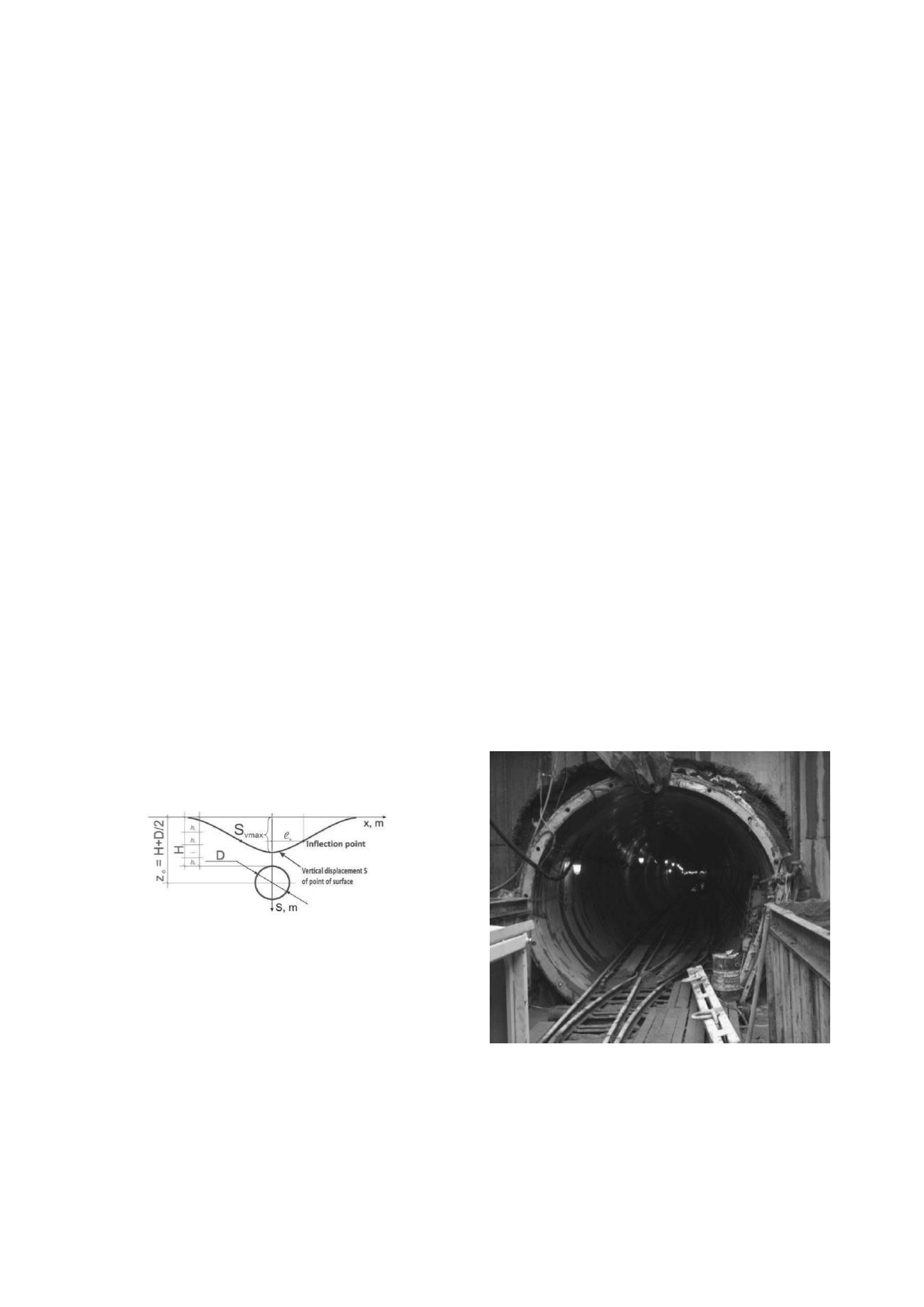
1723
Building deformations, induced by shallow service tunnel construction
and protective measures for reducing of its influence
Déformations de bâtiments induites par la construction d’un tunnel de service peu profond
et actions de protection pour réduire son influence
Ilyichev V.A.
Russian Academy of Architecture and Construction Sciences, Moscow, Russia
Nikiforova N.S.
Moscow State University of CivilEngineering, Moscow, Russia
Tupikov M.M.
Company Ltd ‘Podzemproekt’, Moscow, Russia
ABSTRACT:
Results are cited for theoretical and experimental investigations of the prediction of deformations of the ground surface
and buildings, which develop during the opening of shallow utility tunnels constructed by the shielded method, and also measures
taken to reduce the deformations that occur as a consequence of such an opening
.
RÉSUMÉ : Cet article est consacré à la recherche théorique et expérimentale, сonсernant la prévision des déformations de la surface
du sol et des bâtiments qui surviennent à la pose de galeries techniques peu profondes construites au tunnelier à bouclier. D
es mesures
pour réduire c
es déformations
sont aussi proposées
.
KEYWORDS: Surface and building settlement, shallow service tunnel, loss of ground, empirical method for settlements predicting.
1 INTRODUCTION
The method outlined by Peck (1969) for analysis of ground-
surface settlement demonstrates its dependence on the distance
to the axis of the tunnel,
D
and
H
, characteristics of the soil
(considering the stratification of the soils), and the excess-soil
factor
V
L
. Burland et al. (2001) have developed a method in
which a formula is given for the argument of the inflection point
on the curve of the function of ground-surface settlements
during the opening of a tunnel. Excavations (
Clough G.W. and
Schmidt 1981
), which have modified the Peck method,
supplementing it with a moisture-content characteristic, have
also come into use. Figure 1 shows a surface-settlement diagram
based on the empirical methods cited with parameters entering
as component parts of the formulas.
Figure 1. Surface-settlement diagram for opening tunnel
Construction practice demonstrates that methods employed
to calculate settlement for deep tunnels are not always
applicable for shallow tunnels. In contrast to deep transportation
tunnels, the diameter of utility tunnels
D
= 3-4 m, the depth of
embedment
H
= 4-8 m, and the relative depth of embedment χ =
H
/
D
does not exceed 3.
2 METHOD FOR PREDICTION OF SURFACE
SETTLEMENT DURING OPENING OF SHALLOW
TUNNELS
To substantiate prediction of surface deformations during the
opening of shallow tunnels, a series of projects were subjected
to in-situ settlement measurements, which were then compared
with data acquired by empirical methods for deep tunnels
(Table 1).
Figure 2 shows the 4-m-diameter storm-drain collector along
the Gruzinskii Street line in Moscow, which is being
constructed by the shielded method by a Lovat RME 163 SE
series 23300 tunneling unit with a soil surcharge. The depth of
embedment was 4.0-8.0 m (the analyses were performed by the
N. M. Gersevanov Scientific-Research Institute of Foundations
and Underground Structures, and scientific accompaniment by
the Scientific-Research Institute of Foundations and Structures
and the ANO ANCA RAACS).
Figure 2.Service tunnel construction on Gruzinsky Val Str.In Moscow.
A characteristic feature was that the shield passed close to
the surface in the filllayer of soil. The Lovat Company had
predicted
V
L
= 1.78%, but measurements indicated
V
L
= 5.5%;
this was higher than the value for deep tunnels. Due to the
shallow depth and small cross section of the tunnels, the
distribution of in-situ pressure over the height of the face should
vary considerably with distance from the surface ~(2-3)
D


